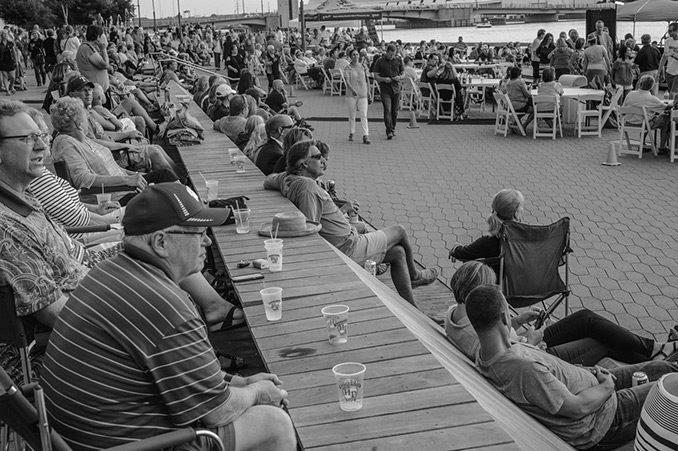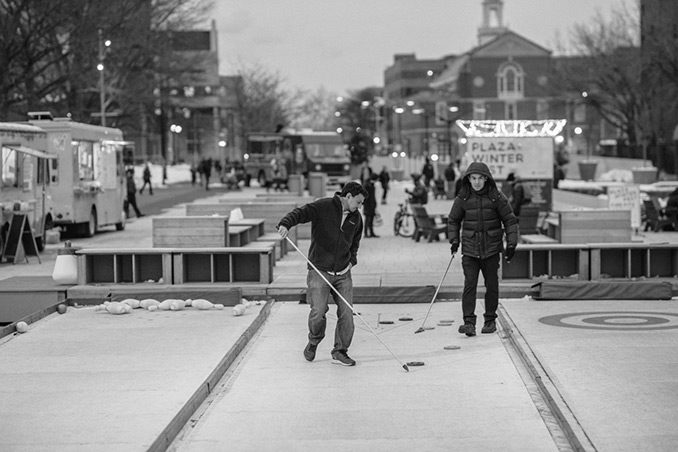What is Landscape Architecture?
A simple enough question with a complex answer.

Landscape Architecture seems simple enough. Design. Build. Plant. And yet, today, landscape architecture is a multi-layered endeavour that starts well before formal design and involves complex systems that can, quite literally, be moving targets. Contending with fluid conditions that are subject to change (economics, climate, infrastructure, politics) is difficult as is, but add in competing experiences, expectations and priorities and it becomes increasingly challenging. By nature the process of designing and building in the public realm is democratic, taking into account, accommodating and anticipating the needs of a diversity of people, perspectives and systems. Concurrently, the designer must also develop a vision, helping to guide clients and communities toward choices that will have longevity, meaning, and function over the long-term. And lastly, the end result–the space itself–is often a layered experience. You viscerally experience landscape in multiple dimensions–visually, sensorially, emotionally, functionally.

So, Landscape Architecture by nature is complex. The definition is subject to the perspective, passions and prerogatives of both people it serves and the practitioners themselves. And, it is collaborative. In this spirit , we thought it interesting and enlightening to ask a breadth of our colleagues at Stoss their individual perspectives on what landscape architecture is.
“Operations aimed to curate the relationship between human, species, and living spheres they occupy.” Like many in the profession, Han focuses on the possibilities for the practice to connect people to their community, to the natural world and even to themselves. Connecting people and fostering community is a critical theme, one that becomes increasingly important as the digital world continues to isolate people from physical experiences.

“Working with living and manmade systems, Landscape Architecture is the imagination and creation of the built environment that can be recreational, productive and resilient.” Sonny’s perspective seems to point towards the act of creating experiences. “What architects do for buildings, but for everything outside” saysChris [Reznich]. The idea of creating meaning and value in the public realm and dreaming up the possibilities of a place is foundational. Landscape Architects are creating outdoor experiences, harnessing nature and the built environment to thrill, engage, and delight people.
Which leads us to Bryan’s thought. “Landscape architecture is… walking along the street with your friends and consistently falling behind because an interesting detail or plant caught your eye.” The simple act of engaging people in the pleasures of the natural world is certainly not to be overlooked. Yet adding complexity to this idea, Albert describes Landscape Architecture as, “an intention/action by a willful group of political animals to create an ideal locus (Paradiso) that [is] superimposing the existing natural/cultural entropy” which certainly adds a whole new layer of complexity to the equation.
“Solving urban scale problems through the design of both public and private spaces.” Gillian encapsulates the important link between the relationships created through the practice and their role as a means to provide solutions to complex issues. Whether contending with issues surrounding infrastructure, climate resiliency, equity, economics, or engagement, Landscape Architecture ideally is working towards solving the intractable problems.
And lastly, Jane sums it up by saying, “Landscape architecture is an all-embracing discourse which manifests and generates a collective of landforms with both visible and invisible elements that is social, economic, cultural and environmental.” Complexity, inherent in her answer to this basic question, seems to reflect the current state of the profession as a whole. Landscape Architecture and its practitioners are increasingly called upon to do much, much more than simply design, build, plant. We, says Amy, “envision a future that is socially, ecologically and economically more diverse, resilient and vibrant than the one in which we live, and in that landscape architecture is very underappreciated”.
Photography | ©2019 Mike Belleme
Text | Team at Stoss
